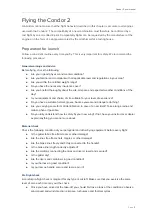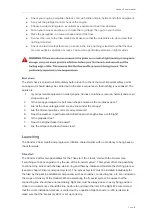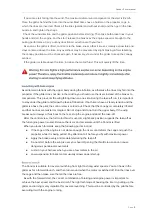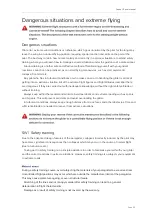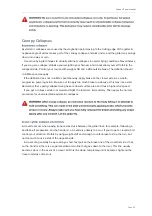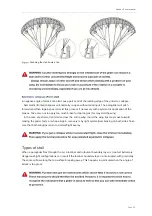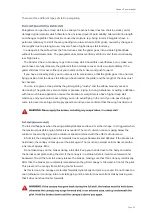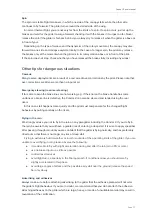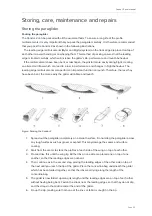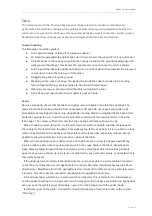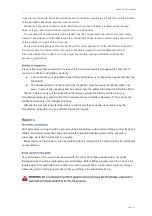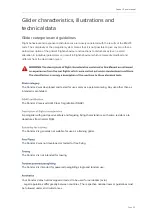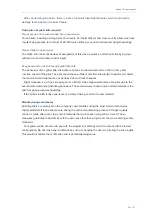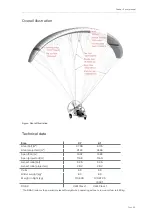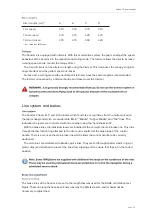
Condor 2 user manual
_____________________________________________________________________________________________________________________________________
There are three different types of stall in paragliding.
Paragliders can go into a deep stall for a variety of reasons: brake lines too short (no slack), old or
damaged glider material which therefore has increased level of permeability, altered trim/line length
and changes to pro
fi
le characteristics caused by moisture (e.g.
fl
ying in rain). Paragliders have a
particular tendency to stall if the wing-loading is too low. An out-of-trim glider, caused by changes in
line lengths due to prolonged use, may also have a higher deep stall tendency.
In a deep stall, the air
fl
ow from the front reduces and the glider goes into a stable
fl
ight attitude
without forward momentum. The paraglider sinks almost vertically at 4-5m/s and there is noticeably
less
fl
ight noise.
The Condor 2 has no tendency to get into a deep stall. Should this nevertheless occur, make sure
your brakes are fully released, the glider will then normally recover on its own immediately. If the
glider still doesn’t recover either put your hands on the A risers and push forward.
If you have a speed system, you can also use it to accelerate, so that the glider goes into a normal
fl
ying position from the deep stall. After you have landed, the glider and the length of the lines must
be checked.
You can recognise a deep stall by the glider getting "mushy" and the air
fl
ow around your ears
decreasing. The glider may also compress spanwise. Flying in strong turbulence or exiting a de
fl
ation
with too much brake applied can cause this situation. A wet glider also has a higher deep stall
tendency, and you should do everything you can to avoid
fl
ying in the rain. If you do pass through
some rain never make big ears! Apply speed bar until you are con
fi
dent that the wing has dried out.
The full stall happens when the wing partially de
fl
ates and loses its arched shape. It is triggered when
the maximum possible angle of attack is exceeded. The most common cause is going below the
minimum speed or
fl
ying near the minimum speed combined with the effects of turbulence.
In full stall, the paraglider loses its forwards travel, surges backwards and de
fl
ates. If the brakes are
held down, the canopy comes up over the pilot again. The result is an almost vertical descent with a
sink rate of approx. 8m/s.
Do not take wraps on the brakes during a full stall. Keep your hands close to the body and under
the harness seat plate during the stall. If the canopy is in a stable full stall, it will move forward and
backward. To exit the full stall, slowly release the brakes, making sure that this is done symmetrically.
After that, the brakes are completely released when the glider canopy is
fi
lled and in front of the pilot.
This prevents the canopy from pitching too far forward.
As this is done, the canopy accelerates forwards dynamically and picks up speed. Do not brake too
soon (otherwise it could go into a full stall again), and be careful to avoid a front stall by making sure
that it does not shoot too far forwards.
Page 26
Summary of Contents for Condor2
Page 1: ...v1 0 March 2022...
Page 48: ...www gingliders com...


